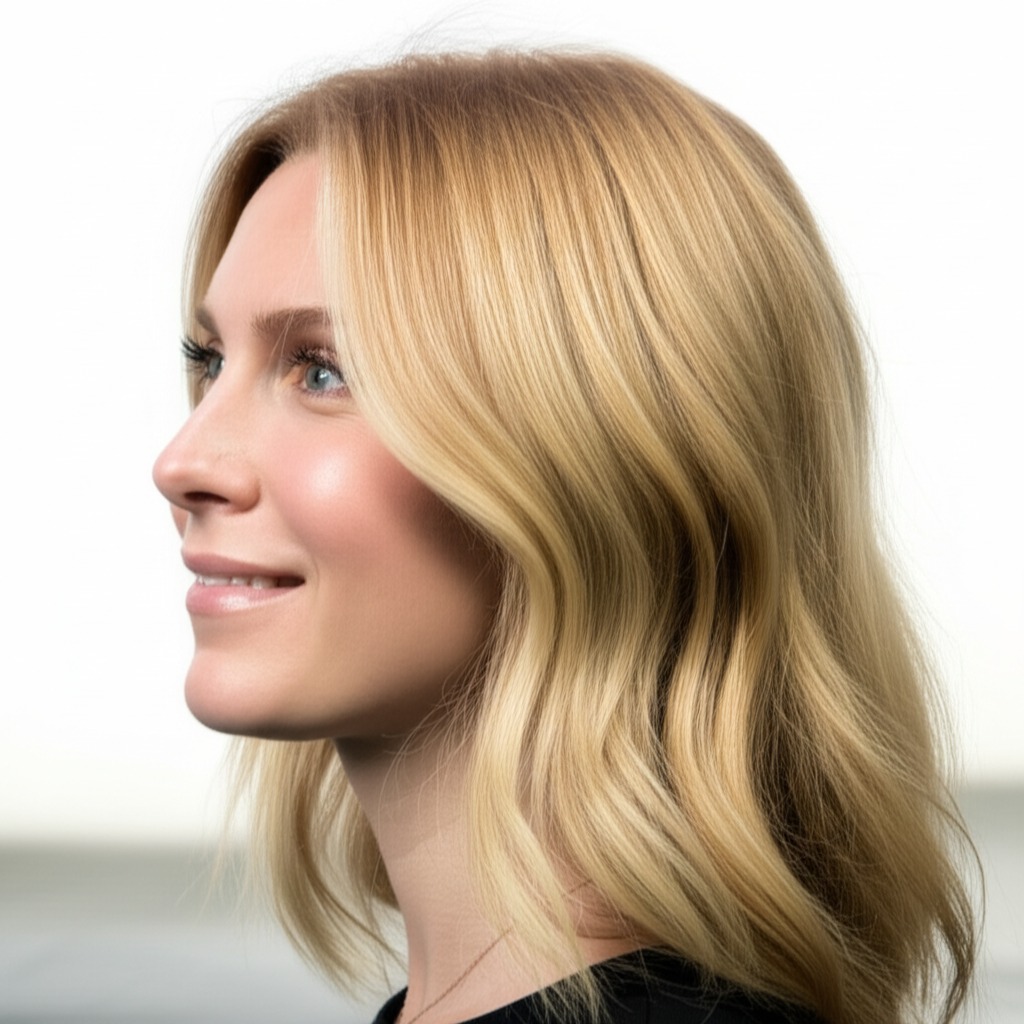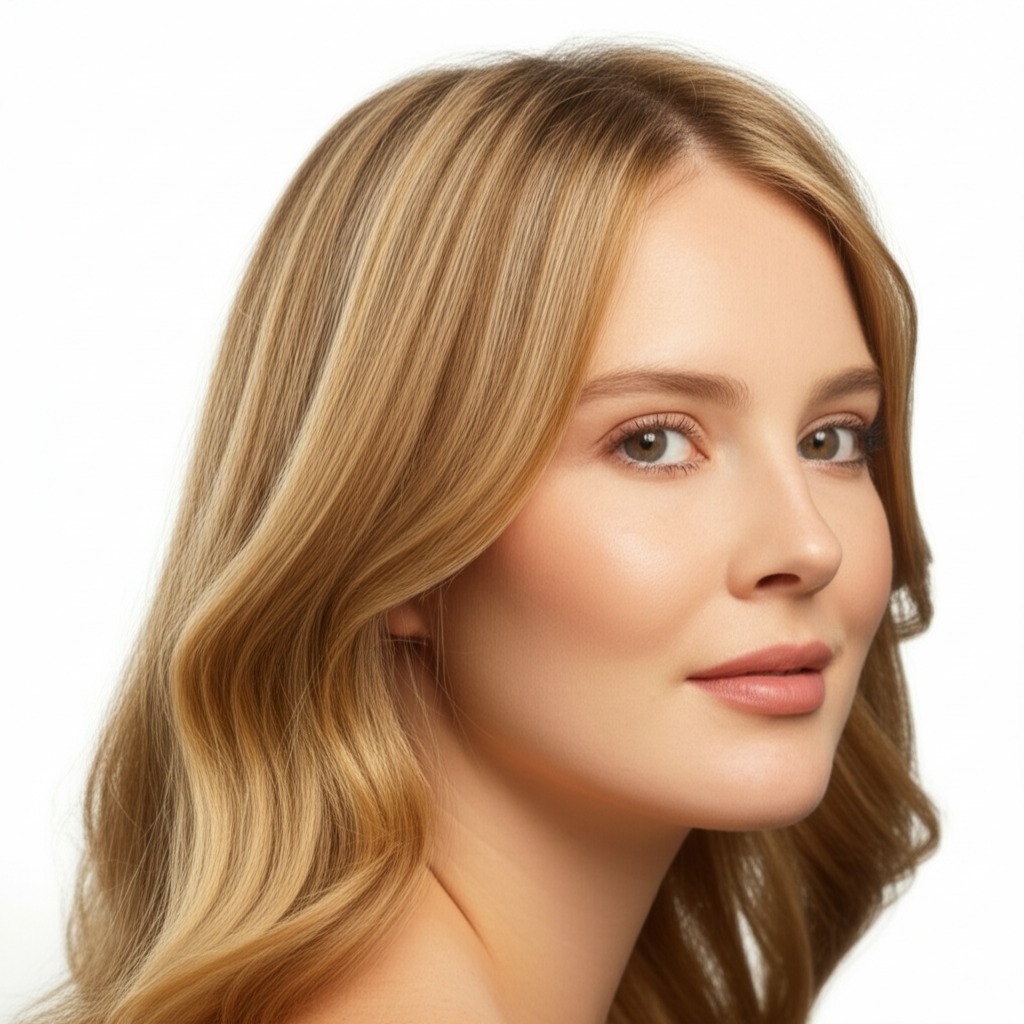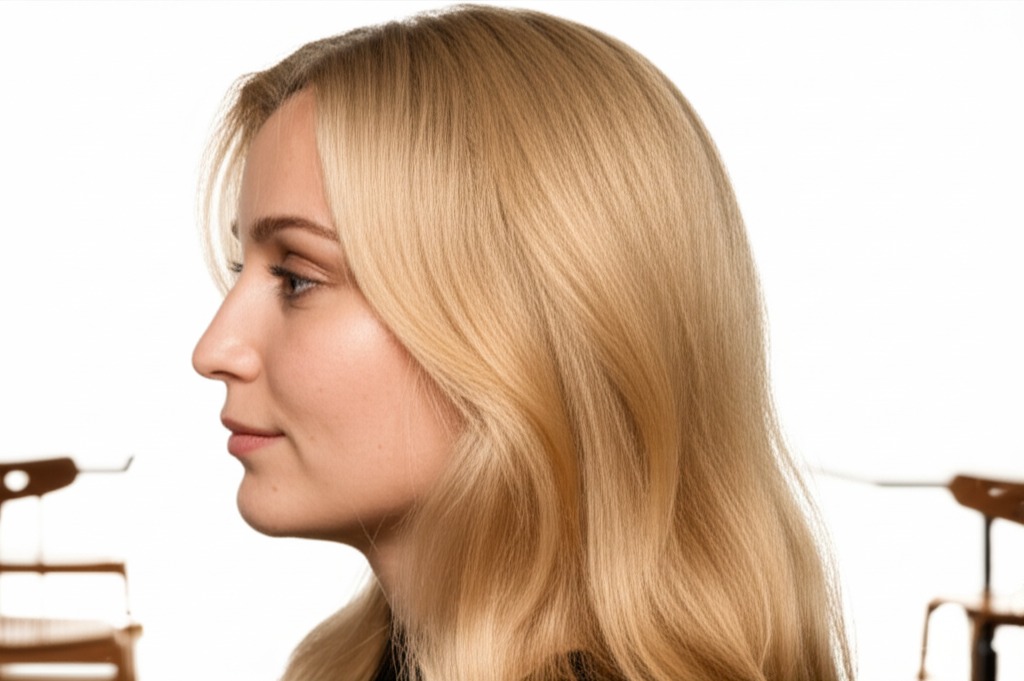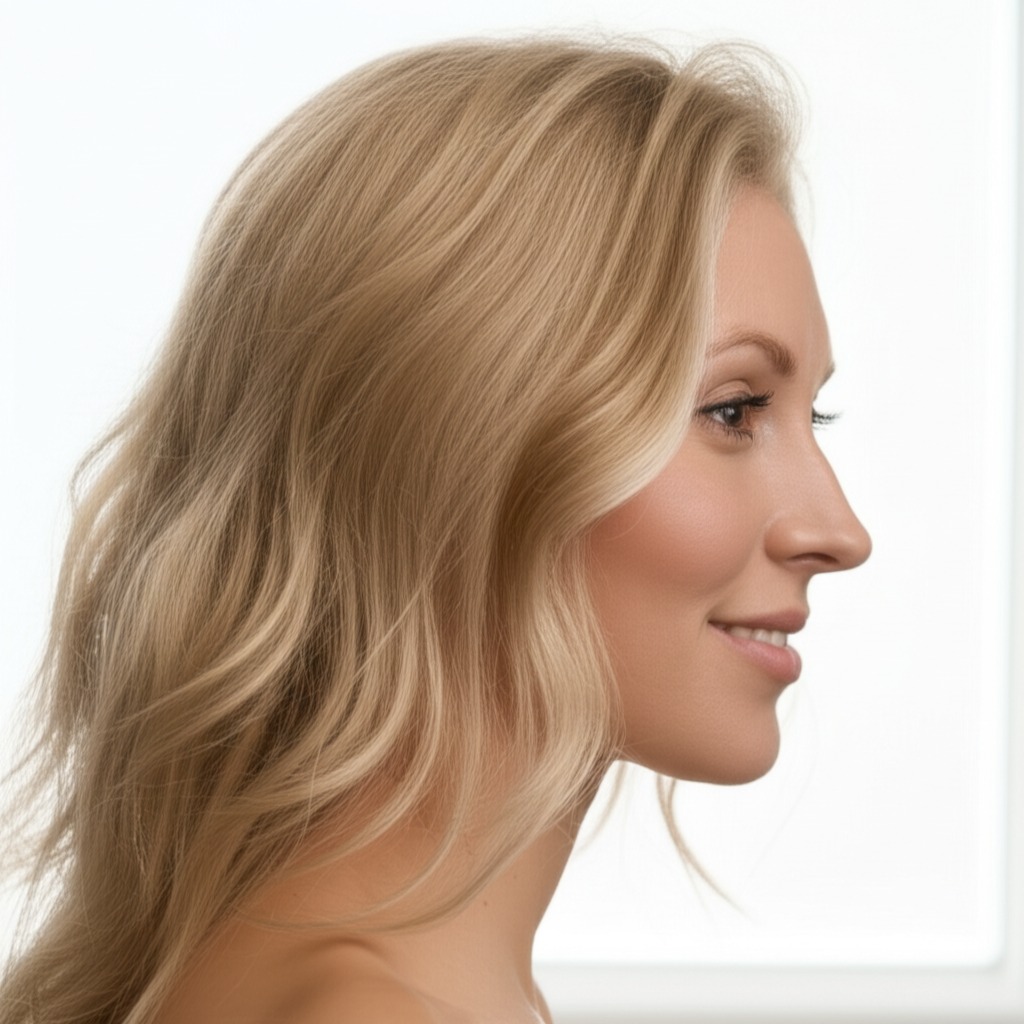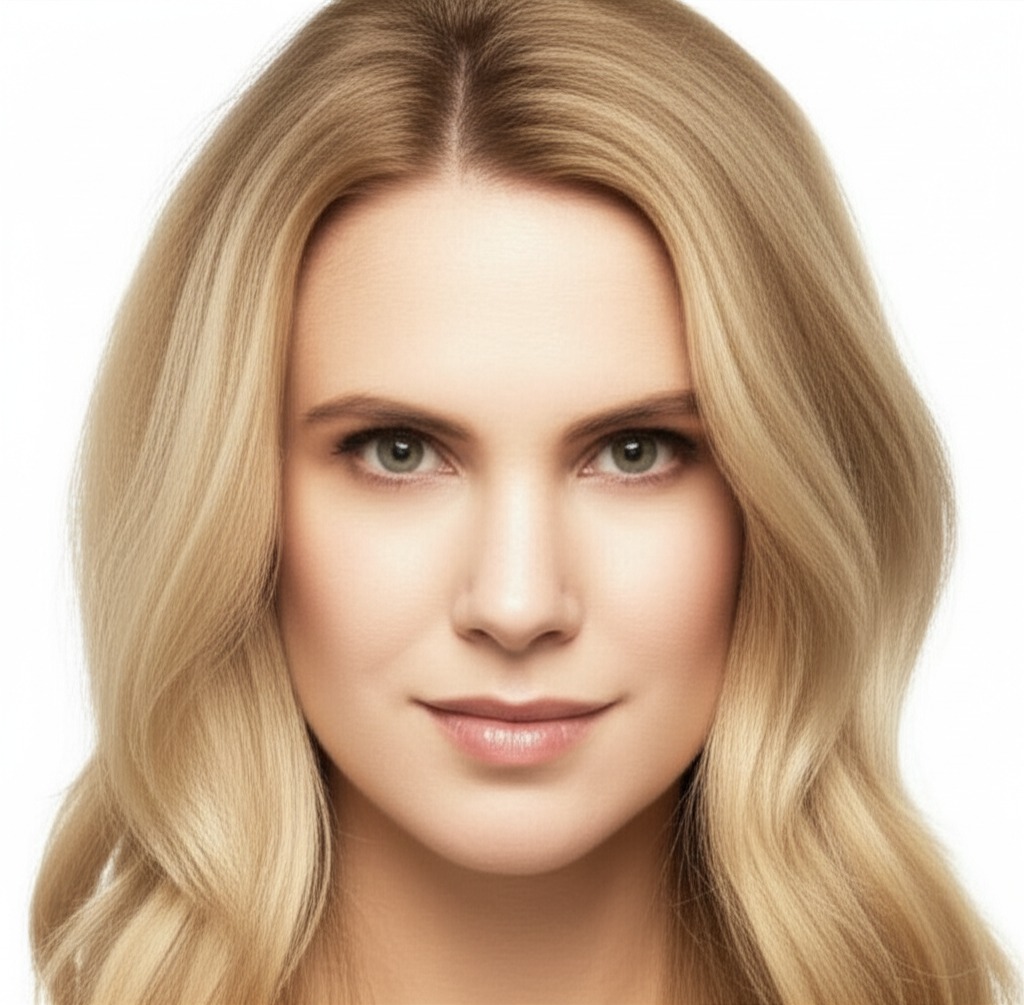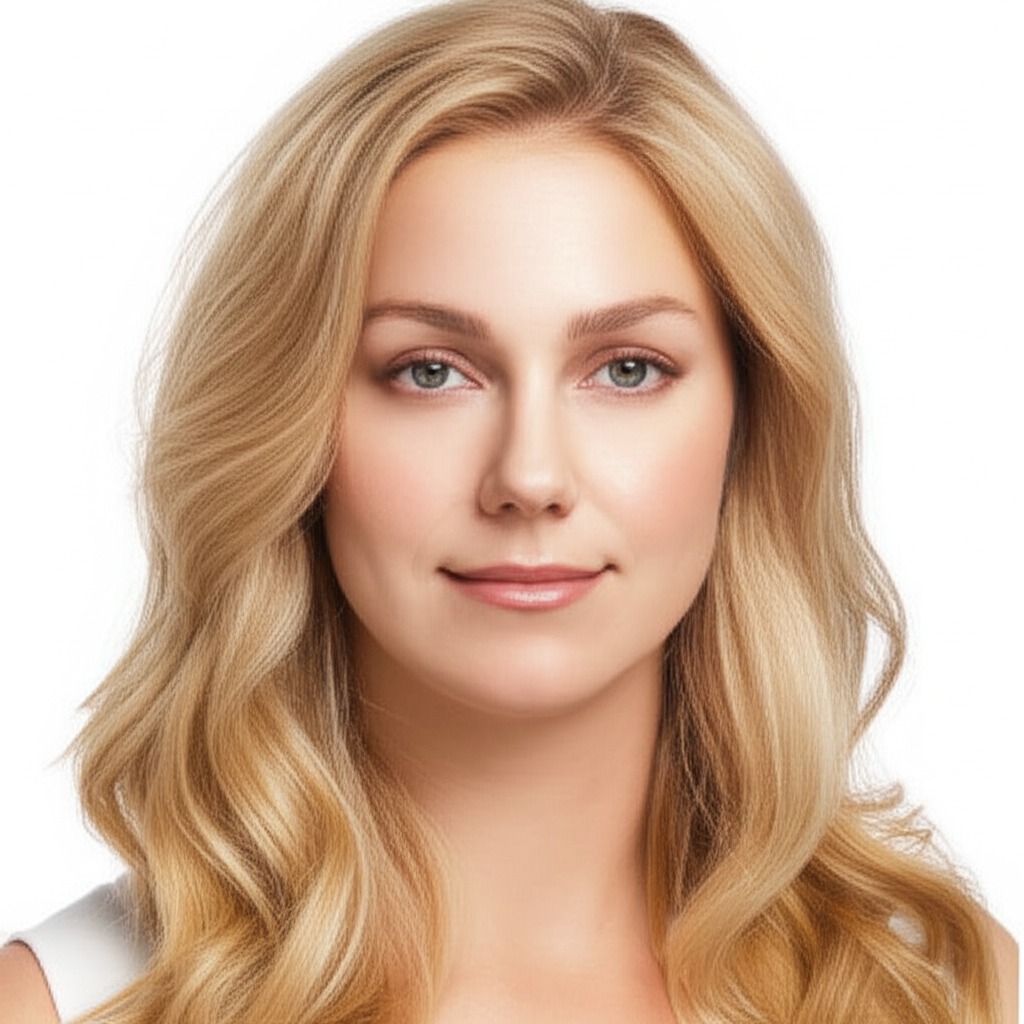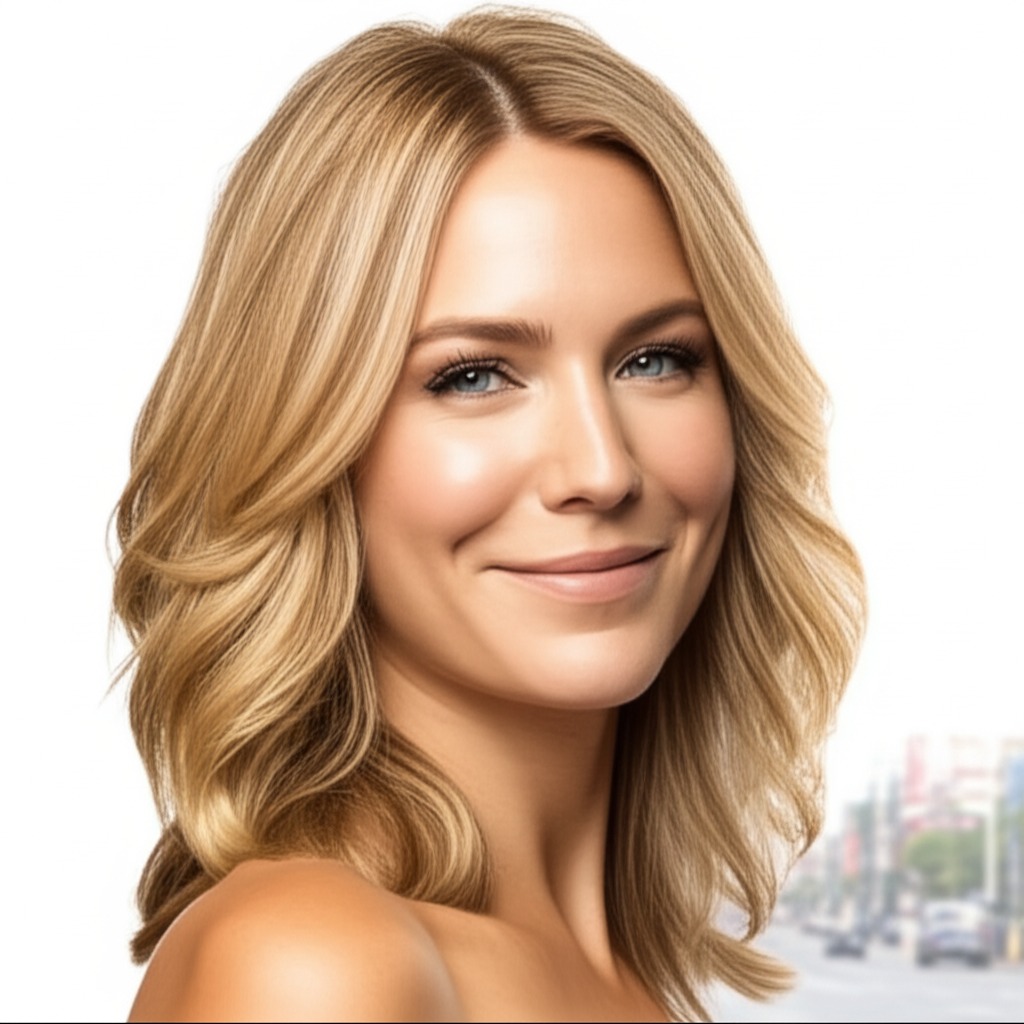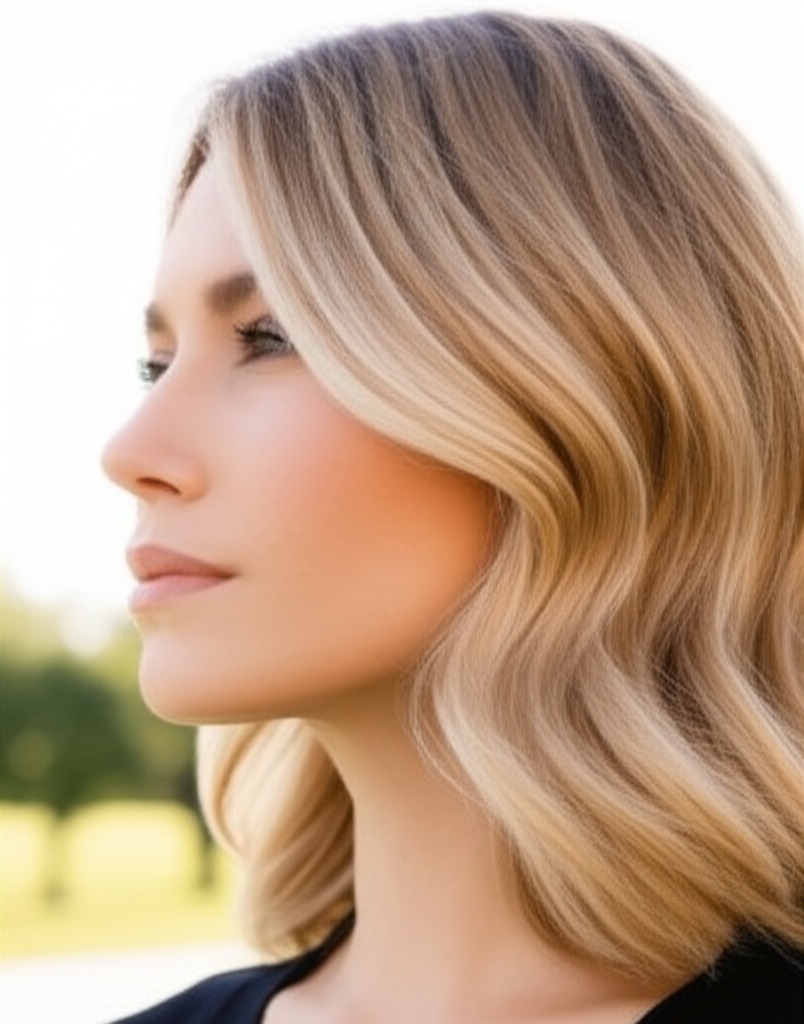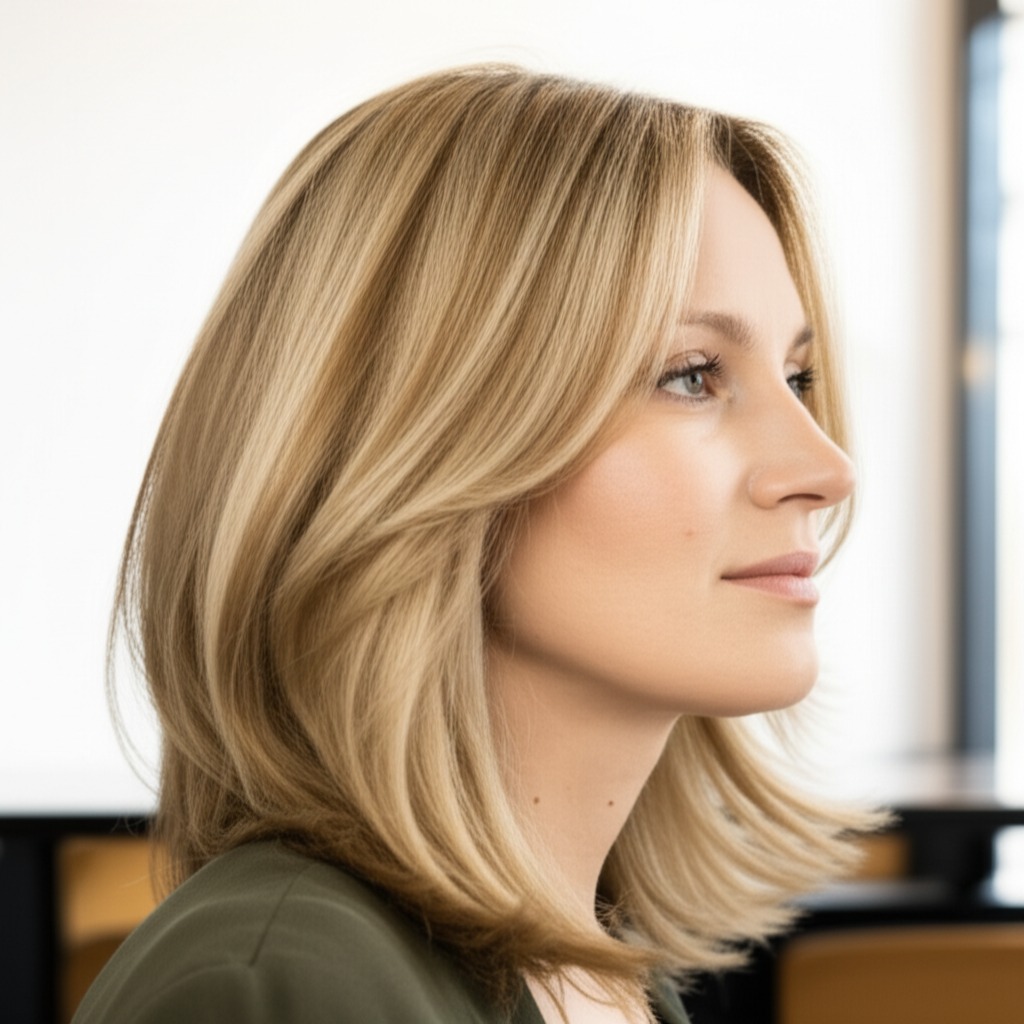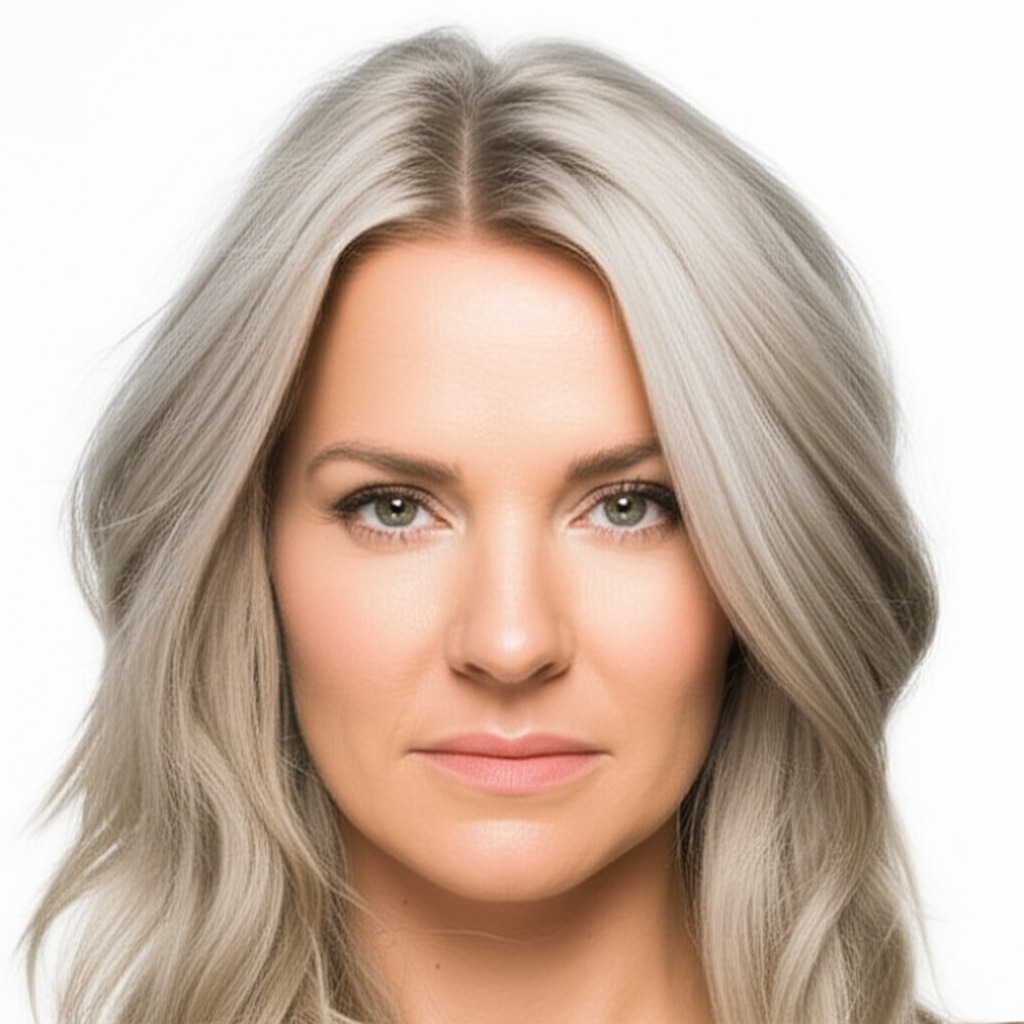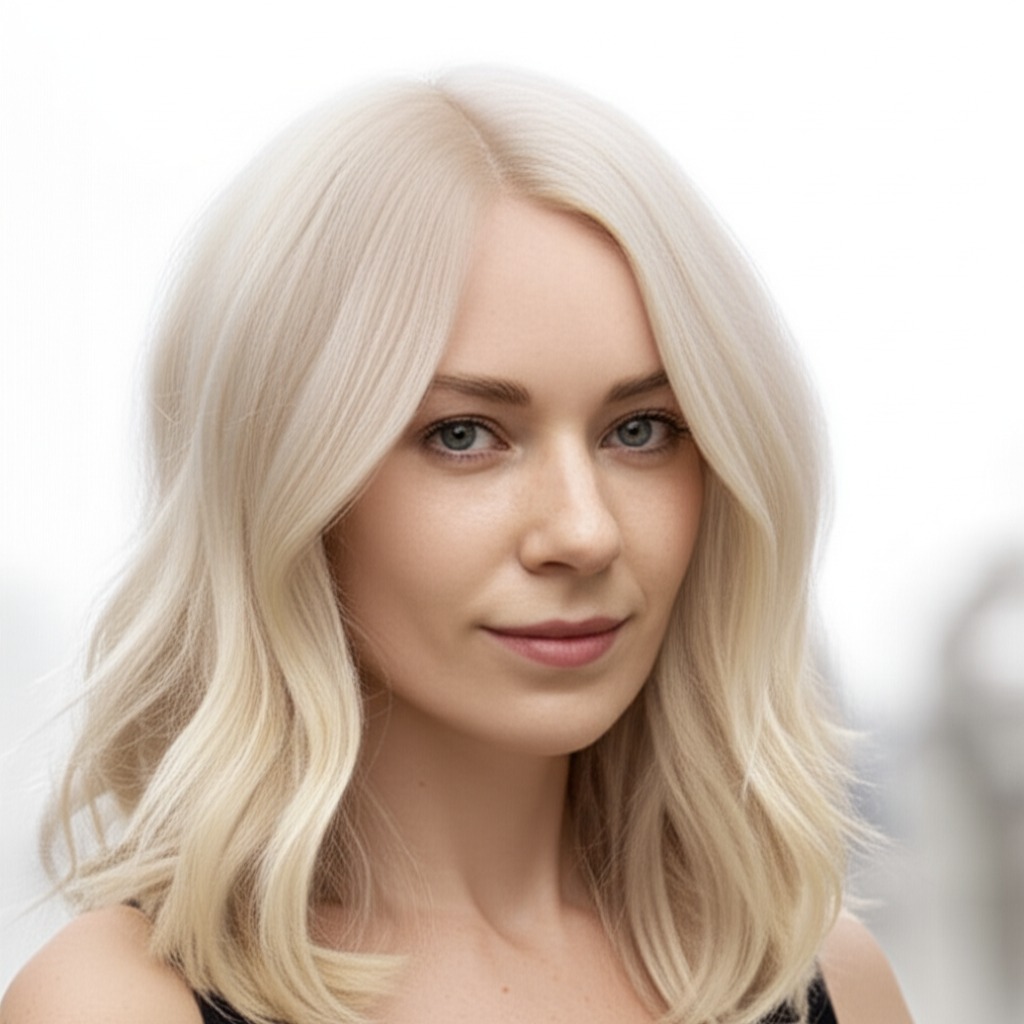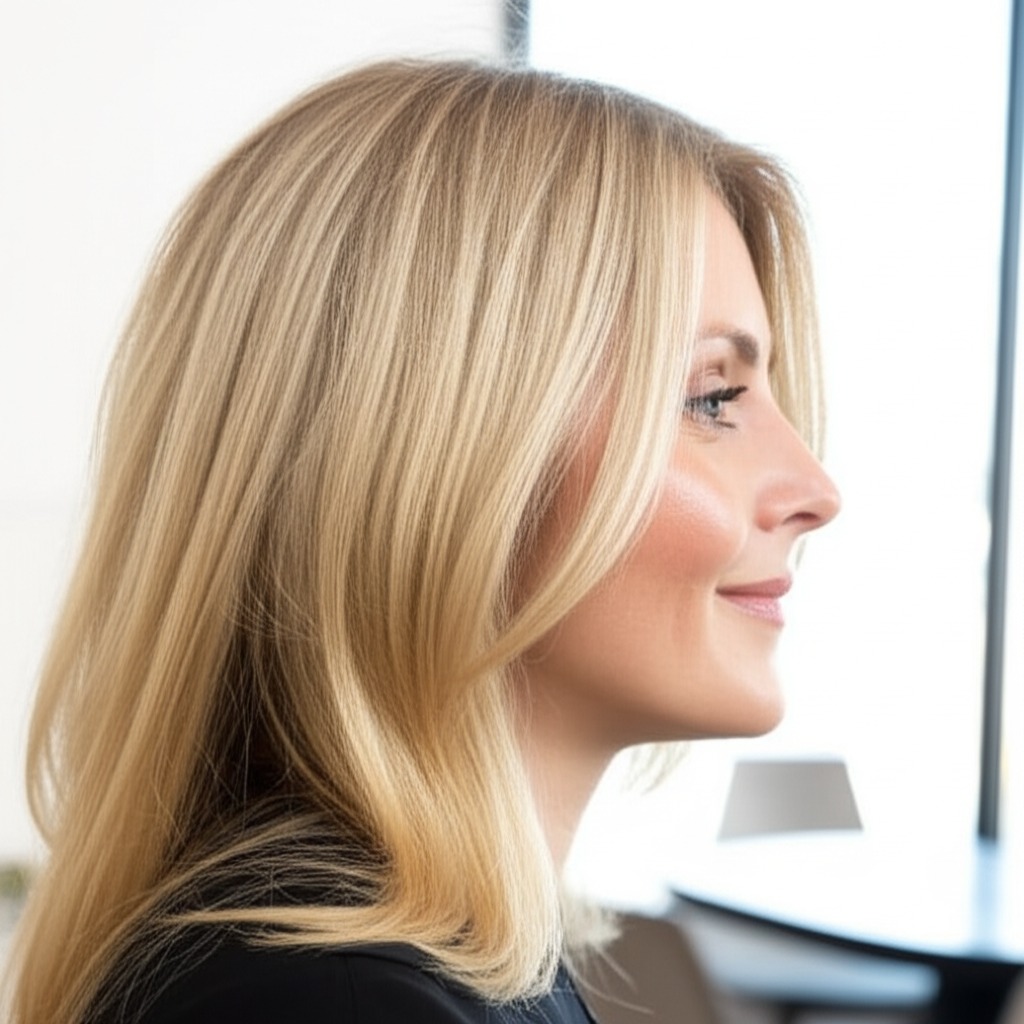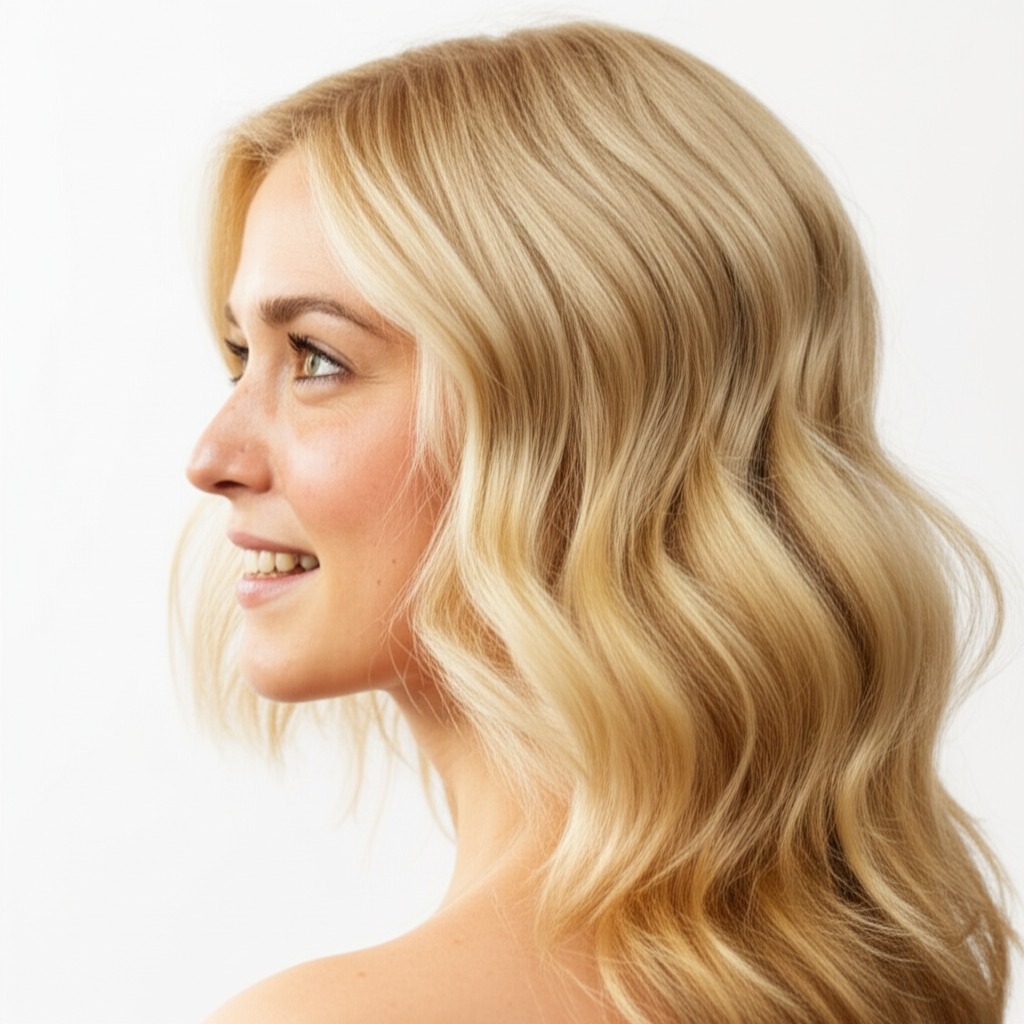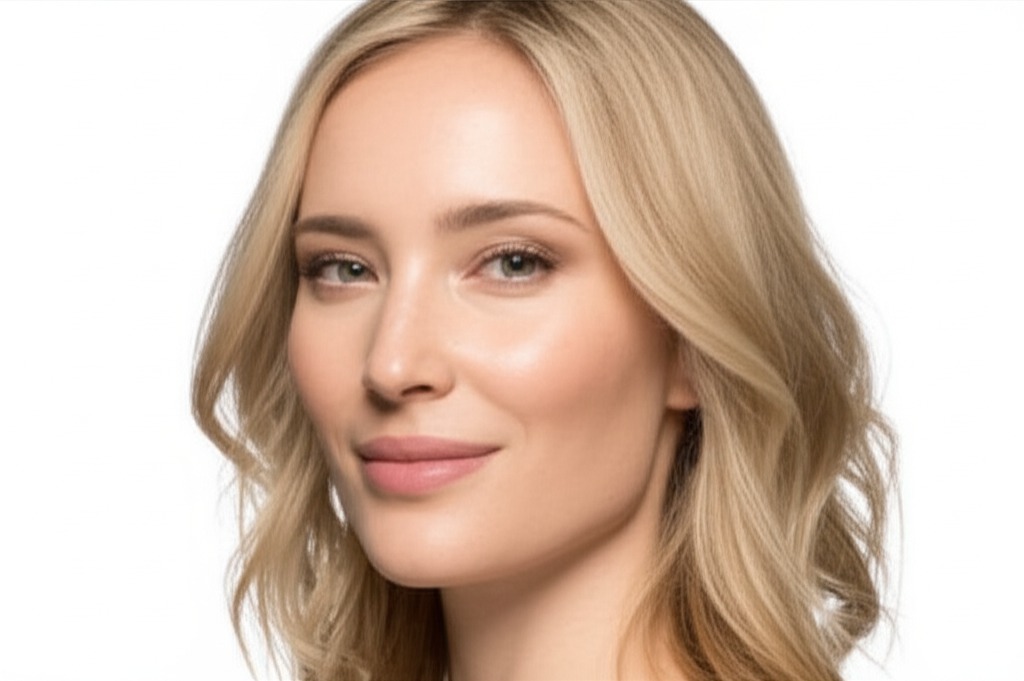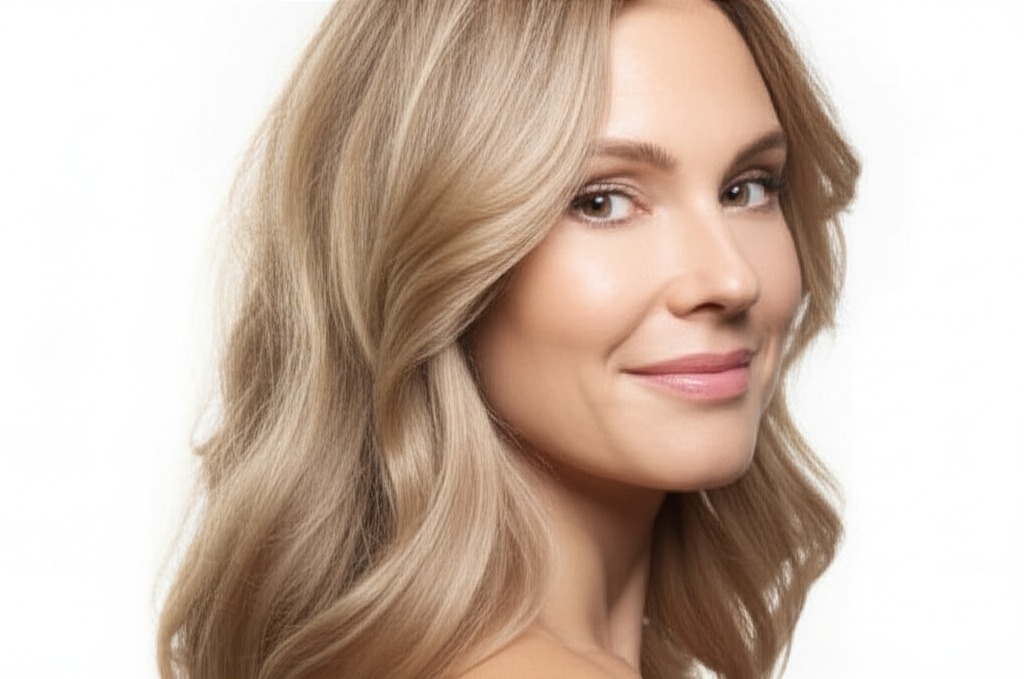#Wheat Blonde: A Golden Guide to Radiant Hair Color
Wheat blonde is a gorgeous hair color evoking sun-drenched fields of grain – warm, inviting, and full of natural beauty. It's more than just "blonde"; it’s a carefully crafted shade with nuances that can transform your look. This guide will break down everything you need to know about wheat blonde, from understanding its undertones to keeping it looking fresh.
#1. Shade Definition: Understanding the Golden Glow
Wheat blonde isn’t one single color; it's a family of shades! Here’s what defines it:
- Undertone: Wheat blonde is almost always warm. This means you'll see golden, honey, or even slightly caramel tones within the shade. It rarely leans cool (ashy) – that wouldn’t feel true to its name. Neutral wheat blondes exist but are less common and require precise formulation.
- Depth/Levels: Levels refer to how dark or light your hair is on a scale of 1-10, with 1 being the darkest black and 10 being the lightest platinum blonde. Wheat blonde typically sits between levels 7-9. A level 7 wheat blonde will be richer and more golden; a level 9 will appear lighter and brighter. The specific level you choose depends on your natural hair color (more on that later!).
- Variations: You’ll see variations like "honey wheat," "golden wheat," or “creamy wheat.” These describe the specific warmth within the shade – honey is deeper, golden is more vibrant, and creamy suggests a softer, milky tone.
#2. Who Does Wheat Blonde Flatter? Finding Your Perfect Match
Choosing a hair color isn’t just about what looks good; it's about complementing your natural features! Here's how wheat blonde shines on different people:
- Skin Tone & Undertone: This is key! Wheat blonde looks best on those with warm skin tones. Think olive, golden, or tan complexions. If you have cool (pink/red) undertones, it can work but requires careful balancing to avoid looking washed out – a skilled colorist is essential in this case.
- Eye Colors: Wheat blonde enhances most eye colors! Green eyes pop beautifully against the warmth; brown eyes gain extra sparkle; and blue or hazel eyes appear even more captivating.
- Natural Level Starting Points: The lighter your natural hair, the easier it will be to achieve wheat blonde.
- Levels 1-4 (Dark Brown - Light Brown): Significant lightening is required, which takes time and commitment. Expect multiple salon visits.
- Levels 5-6 (Medium Brown): Still requires lifting but a more achievable process than starting from darker levels.
- Levels 7-9 (Light Brown – Blonde): The easiest transition! A simple gloss or toner might be all you need to reach your desired wheat blonde shade.
#3. Technique Options: Crafting the Look You Want
How you apply the color matters just as much as the color itself!
- Single-Process: This is a full, even application of color – best for those already fairly light or wanting a solid block of wheat blonde.
- Highlights/Lowlights: Adds dimension and movement. Highlights brighten specific sections; lowlights add depth. A mix can create a natural, sun-kissed effect.
- Babylights: Ultra-fine highlights that mimic the look of naturally lighter strands – very subtle and flattering on all hair types.
- Gloss/Toner: Used to adjust the tone (warmth) of existing blonde or enhance the wheat color. Essential for maintaining brightness!
- Balayage-Effect vs Solid: Balayage creates a blended, hand-painted effect with softer roots – looks more natural and requires less maintenance than a solid application.
#4. Maintenance & Longevity: Keeping Your Wheat Blonde Glowing
Wheat blonde demands attention to keep it looking its best!
- Wash Frequency: Less is more! Aim for 2-3 washes per week using color-safe shampoo (see At-Home Care).
- Toner Refresh: Toners fade quickly. Plan for a toner refresh every 4-8 weeks, depending on how fast your hair processes and the desired intensity of the shade.
- Root Growth Pacing: Consider balayage or strategically placed highlights to blend root growth seamlessly – extending time between salon visits.
- Budget/Time Planning: This isn’t a “set it and forget it” color! Expect salon appointments every 6-12 weeks, depending on the technique used. Budget $150-$400+ per visit (and potentially more for complex techniques).
#5. Seasonality & Pairing with Cuts: Adapting Your Look
Wheat blonde is versatile but can be tweaked to suit different seasons and styles!
- Cuts:
- Bob/Lob: A sharp bob or lob highlights the brightness of wheat blonde, creating a modern, chic look.
- Long Layers: Adds movement and dimension – perfect for showcasing balayage-effect techniques.
- Pixie: A bold choice! Wheat blonde on a pixie cut is playful and youthful.
- Seasonal Tweaks: In summer, embrace brighter, more golden tones. During fall/winter, opt for richer, deeper wheat shades with hints of caramel.
- Occasions:
- Work: A softer, less intense wheat blonde (level 8-9) is professional and polished.
- Daytime: A vibrant, honey wheat looks fresh and fun.
- Evening: Go bolder! Add shimmer glosses for extra sparkle.
- Weddings: Wheat blonde complements bridal styles beautifully – consider adding subtle highlights or babylights.
#6. At-Home Care: Protecting Your Investment
Proper at-home care is essential to preserve your wheat blonde’s vibrancy and health!
- Sulfate-Free Shampoo & Conditioner: Sulfates strip color, leading to fading.
- Clarifying Cadence: Use a clarifying shampoo (once every 1-2 months) to remove product buildup – but be gentle!
- Heat Protection: Always use heat protectant spray before styling with hot tools.
- Color-Safe Styling Tips: Avoid harsh chemicals and excessive sun exposure. Rinse hair with cool water to seal the cuticle.
- Product Checklist: Sulfate-free shampoo, color-safe conditioner, deep conditioning mask, heat protectant spray, purple/blue toning drops (for brassiness).
#7. Common Pitfalls: Avoiding Color Catastrophes
Let’s tackle potential problems before they happen!
- Brassiness: Warmth can become too warm. Use a purple or blue toning shampoo/mask to neutralize orange tones.
- Banding: Uneven color application – often due to inconsistent product saturation. A skilled stylist is key to avoiding this.
- Patchiness: Occurs when the color doesn't lift evenly. Requires correction and potentially multiple salon visits.
#8. Pros & Cons: Weighing the Options
Pros:
- Versatile: Suits a wide range of skin tones and hair types.
- Flattering: Enhances features and adds radiance.
- Natural-Looking (with Balayage): Can mimic sun-kissed highlights.
Cons:
- Maintenance Burden: Requires regular salon visits and at-home care.
- Fade Risk: Color fades over time, especially with improper care.
- Commitment: Significant lightening is needed for darker hair – a big commitment!
#9. Salon Consultation Script: Setting Expectations
Before you sit in that stylist's chair, be prepared! Here are some prompts to guide the conversation:
- "I’m interested in wheat blonde. Can we discuss my skin tone and undertone to ensure it will complement me?"
- “What level of wheat blonde would you recommend based on my natural hair color?”
- “Can you explain the different techniques (balayage, highlights) and which would be best for achieving a low-maintenance look?”
- "How often will I need salon visits to maintain this color?"
- "What at-home care products do you suggest?"
- “I’m concerned about brassiness. What steps can we take to prevent it?”
#10. FAQs: Your Burning Questions Answered
- Can I go wheat blonde if I have dark brown hair? Yes, but it will require multiple salon visits and significant lightening. Be prepared for a longer process and potential damage.
- Will wheat blonde make my hair look orange? Not necessarily! It’s all about the undertone and application technique. A skilled stylist can adjust the formula to avoid an overly orange result.
- How long does wheat blonde last? The color itself will fade gradually, but toner fades faster (4-8 weeks). Root regrowth requires touch-ups every 6-12 weeks.
- Is wheat blonde damaging to my hair? Any lightening process can cause some damage. Proper care and protein treatments are essential for maintaining hair health.
- Can I achieve this at home? While possible, it’s risky, especially with darker starting levels. A professional stylist is highly recommended for optimal results and minimal damage.
- What if my wheat blonde looks too yellow? Ask your stylist to tone down the yellowness with a violet-based gloss or toner.
With careful planning and expert execution, you can achieve stunning wheat blonde hair that radiates warmth and confidence!
